
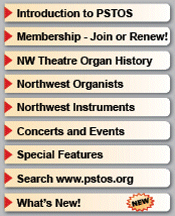

Liberty Theatre - 4/34 Wurlitzer
From the PSTOS Pipeline newsletter and Eugene Nye records:
Portland, Oregon
Broadway
Organ installation timeframe: 1918 - 1963
Back to the Oregon Original Theatre Installations page
The original Liberty Theatre opened in 1916 as the T & D (Turner & Dankin circuit) Theatre. The house was renamed Liberty Theatre later that year.
The Liberty had three different Wurlitzers installed over the years, perhaps at different addresses:
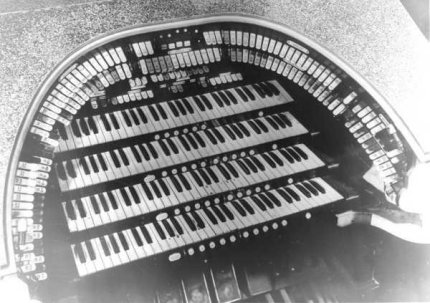
Liberty Theatre, 1918 console in the theatre
A matching organ was installed in the Coliseum Theatre in Seattle (both theatres were under the direction of Jensen and Von Herberg, who were also responsible for the earlier landmark Seattle Liberty Theatre organ).
The Seattle Coliseum and Portland Liberty were the largest Wurlitzer theatre organs built until the 36 rank installation in the New York Paramount in 1926. The Denver Auditorium was also an early 36 rank organ, but it was a concert organ, not built for movie accompaniment.
Theatre owner/operators Jensen and Von Herberg showcased the instrument and hired the country's top theatre organ names of the period - Henry Murtagh, Henri Keates, Albert Hay Mallotte. Henri Keates was house organist at the Liberty for many years until retiring in 1925.
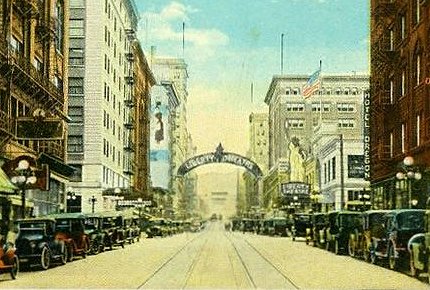
Looking South from Oak Street. Note "Statue of Liberty" signage on right.
According to William Hansen: "Over the years the most effective 32' Diaphone and general power of the organ caused considerable plaster damage in the theatre. The organ was played day and night for well over ten years, and the middle keys of the Great and Accompaniment manuals were worn well through the ivories, deeply into the wood base. It was a great success all the way around."
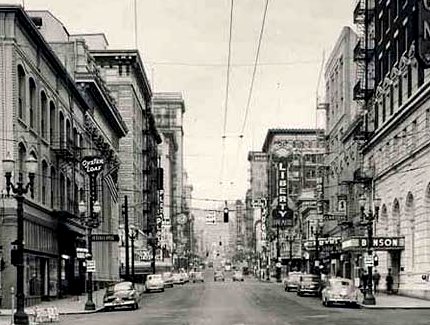
Broadway, looking south. Liberty Theatre on right c.1950
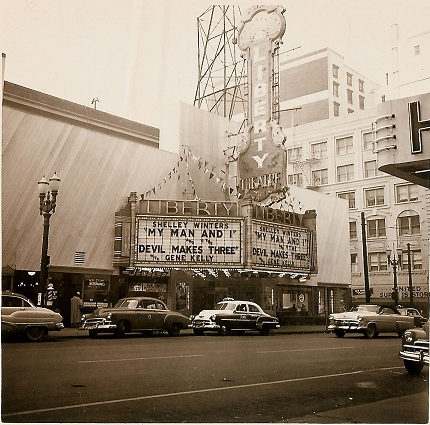
Liberty Theatre with new aluminum facing on the building. c.1952. Photo by Marvin Fox, courtesy of Jeff Fox, 2014
Below is a 1950's street scene image from a postcard. The Liberty Theatre signage is visable at the far left. Note also the Sherman Clay Music sign above the Payless Drug store.
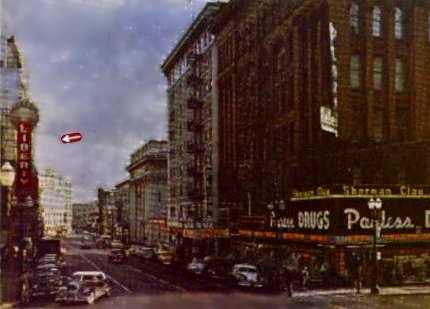
Postcard view offering a glimpse of the Liberty Theatre, far left, c.1950s
According to Eugene Nye, the organ was last used in the theatre in February, 1959. Sometime in the early 1960s, the 32' Diaphone and 4' Harmonic Flute were given to Dennis Hedberg in exchange for work on the organ.
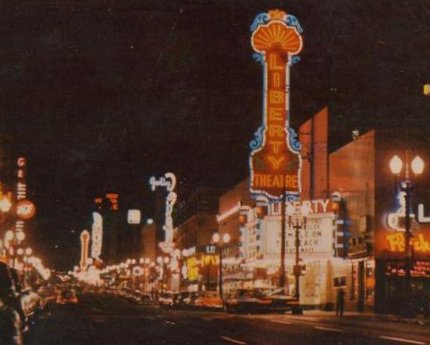
Looking South on Broadway, c.1955. Fox and Paramount Theatre signage also visible in the background.
In the mid 1960's, the organ was sold to Lou DuMoulin of Seattle who installed it in the former Granada Theatre in West Seattle. The Granada Organ Loft Club was formed and Lou later sold the organ to the group.
In 1974, the Forchuks (Organ Grinder financiers) and Dennis Hedberg purchased the instrument and used a portion of it in the Organ Grinder Restaurant in Portland; most notably the 32' Diaphones and 4 rank Vox Humana chorus (with one rank going to 16'). The remainder of the instrument was dispersed for parts.
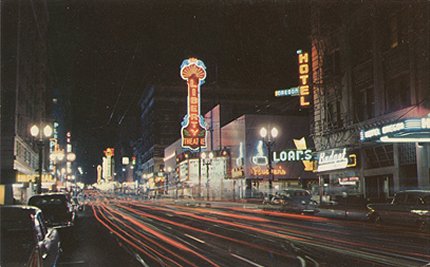
c.1950's
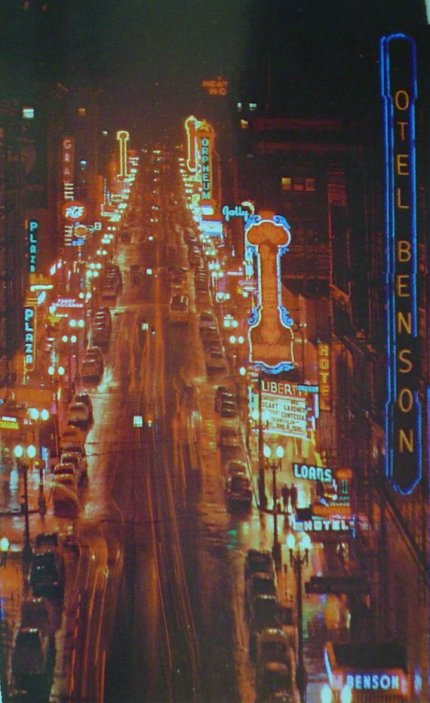
c.1954. Orpheum, Broadway and Paramount Theatre signage visible in the distance.
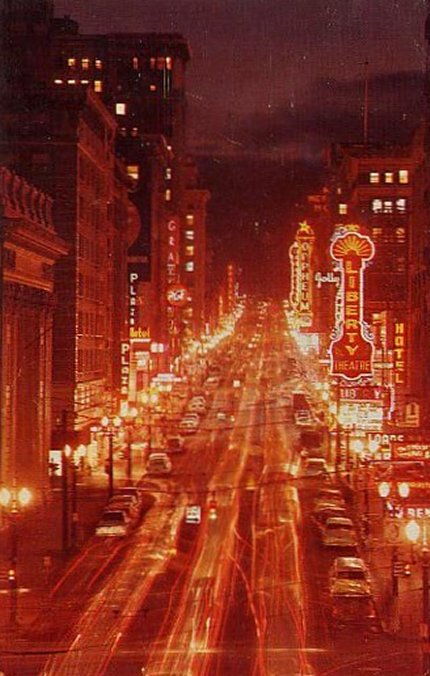
c.1950s
About this site © PSTOS, 1998-2017